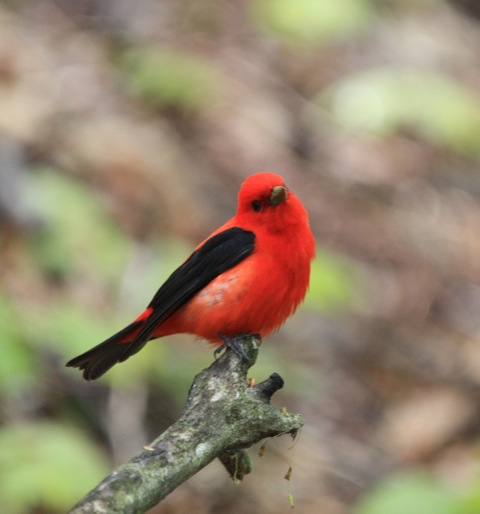From our 2008 Fall Newsletter
October 2008–The Leelanau State Park is now officially expanded by 51 acres and 1,400 feet of shoreline. The Leelanau Conservancy transferred the land to the park this week after optioning the land two years ago. “We’re thrilled,” says Al Ammons, director of the Leelanau State Park. “The Conservancy has been a wonderful partner to work with in keeping this end of the peninsula in its natural state. In a number of instances, if the Leelanau Conservancy had not stepped in with intermediary financing, we would have lost this unique habitat. It is so important to the migratory songbirds and warblers that come through here, birds that are on the decline.”
More than birds may one day flock to the tip, Ammons predicts. He sees the area as ripe for ecotourism. “We’re in a unique position with our abundant natural resources here,” he says. The tip is being targeted by the Audubon Society for listing as one of the Society’s “Important Birding Areas.” Once that happens, the tip will become a destination for the nation’s birders who can be a boon to the local economy.
“Billions of dollars are spent each year on ecotourism, and a lot of that money is spent by birders,” says Kay Charter, co-founder of Saving Birds Thru Habitat in Omena. According to Charter, a five- day birding festival in Harlingen, Texas brings in $5 million to the local community.
Sally Coohon, president of the Northport/Omena Chamber says that “preserving natural areas is important. And anything that draws people through our little rural village is good. Any time you have anyone driving though, they’re bound to stop and have lunch or just explore our little village. It’s a win win.”
The State Park addition and its spectacular shoreline are immediately adjacent to the campground on the Grand Traverse Bay side of Lighthouse Point. The project is one of two important shoreline acquisitions at the tip that the Leelanau Conservancy has accomplished.
What’s so special about this locale? The tip is an ideal spot for migrating birds to pause in their long journey. Here, they feed and rest before crossing the big water. Over 100 species have been documented in the area. Wading birds and waterfowl gather on the cobble beach and feed in the wetlands there. Offshore, the open, shrubby land with intermittent pockets of wetland feed and shelter sparrows, indigo buntings and wax wings. Further from shore, beech and maple host wood warblers, woodpeckers, chickadees, jays, cardinals and many other birds that depend on seeds, buds and nesting sites that hardwood provide.
Ammons says that the campground won’t be expanded into the new property, but a six-foot-wide trail is planned that would connect it to the existing camping. “We’d like to have as little impact as possible on the land, while also opening it up for people to be able to come and see the thousands of birds that stop here each year,” he says, adding that early April through early June are peak times for migration. “Birders could really help area businesses, especially at a time of year when the really need it,” he adds.
The new acquisition was funded in part by a Michigan Natural Resources Trust Fund grant of $2,043,000 secured by the Leelanau Conservancy in December 2006. But the funds weren’t released until just last week. When the option ran out in August, the state funds were not yet available. The Conservancy turned to the Conservation Fund for help–a national nonprofit land and water conservation organization. It provided a bridge loan for the purchase through its Land Trust Loan Program.
“We’re glad we could help the Leelanau Conservancy meet the needs of both the landowners and the Michigan Department of Natural Resources and protect such an important piece of property,” said Reggie Hall, program manager for The Conservation Fund’s Land Trust Loan Program. “Our loan program exists for projects like this, and we’re thrilled to be a part of local conservation in the great state of Michigan.”
With this transaction, the Conservancy has now protected 625 acres in the Cathead Bay to Lighthouse Point area. “Between these two projects, we have secured $3 million in state funds, and raised $900,000 in local matching funds from private donors who care deeply about the tip of the peninsula,” says Conservancy Director Brian Price. “The public will benefit tremendously by having this unique feature of our beautiful peninsula forever preserved.”




